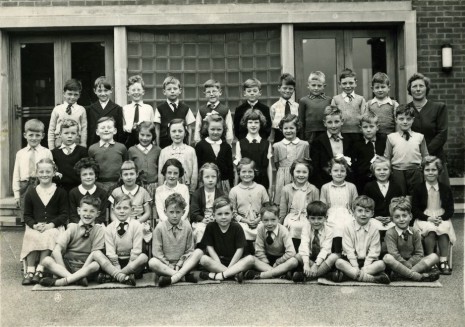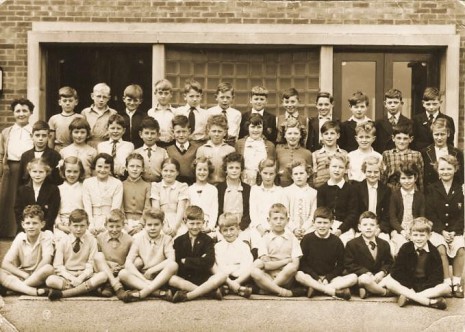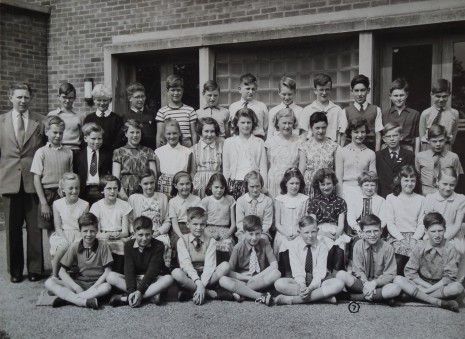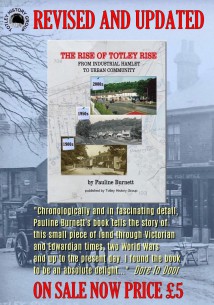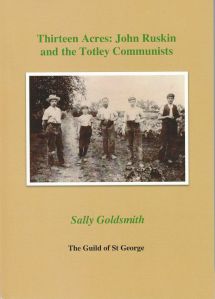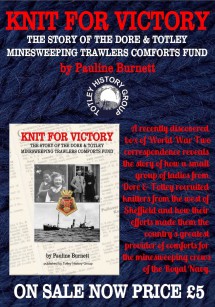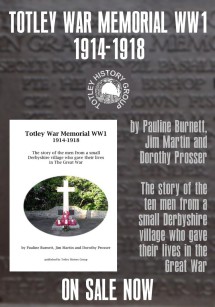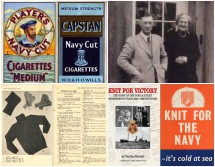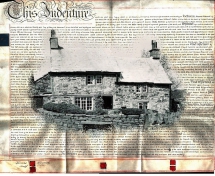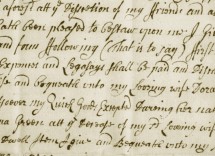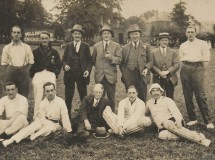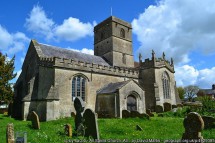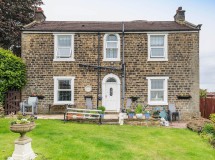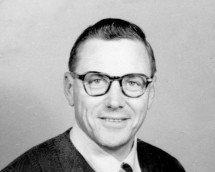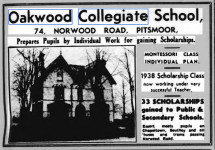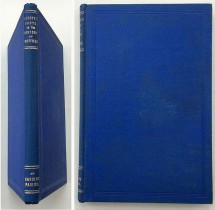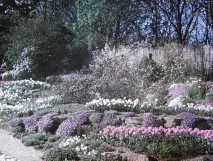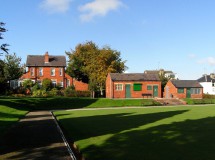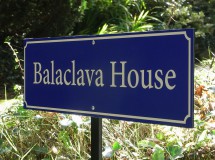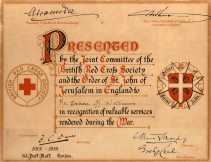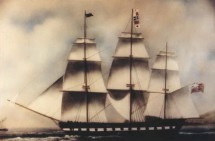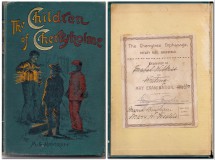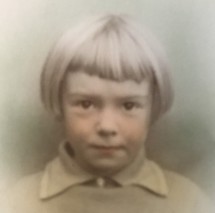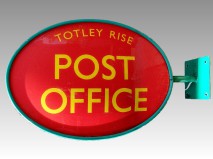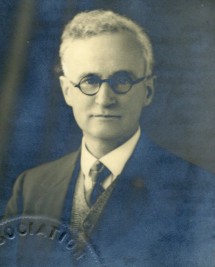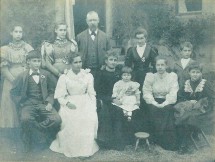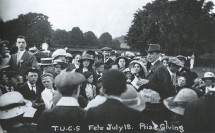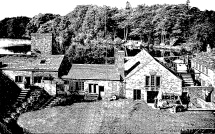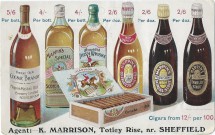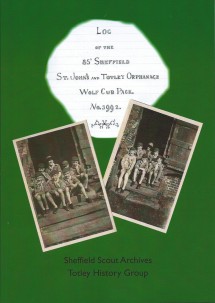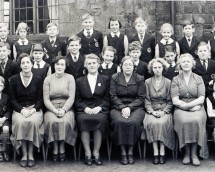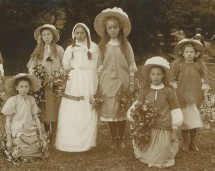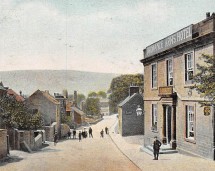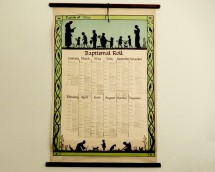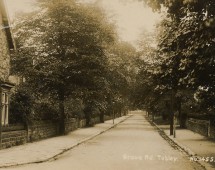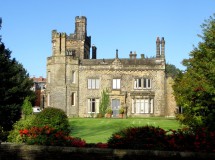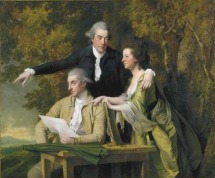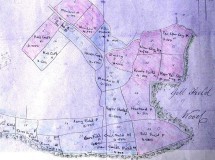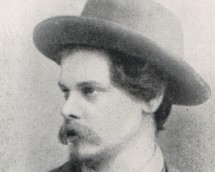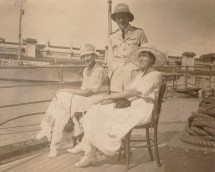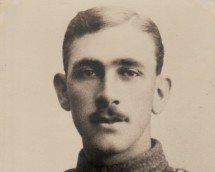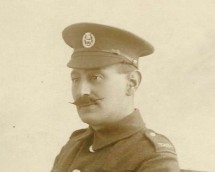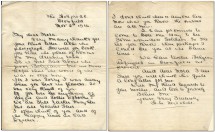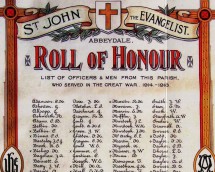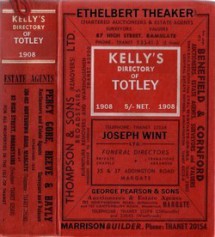Memories of Totley Primary School (1952–1958)
by David Hope
The school was originally called Totley County School or TCS, but known to generations of 50s’ pupils as ‘Totley Cowsheds’. The other school in Totley, All Saints C of E School, was still (I think) the old-fashioned ‘all through’ village school catering for children up to school-leaving age (then 14, I think) – and there were certainly some ‘big boys’ that we little ‘uns were all a little scared of. Yan Kendal was one name I remember!
The classes at Totley were:
Reception
Infant 1
Infant 2
Junior 1
Junior 2
Junior 3
Junior 4
Born in 1947, I was a child of the biggest-ever ‘bulge year’ following the Second World War, and presumably the school was built to accommodate us in the growing community of Totley (which, until the mid-1930s, had been a small Derbyshire village – and remained in the Diocese of Derby until the 1970s). Likewise, because of numbers J3 and J4 (at least) were divided into A and B sections. J3A’s teacher was W E ‘Pop’ Roberts, who moved up to J4 with us, much to my parents’ delight; he was a very good teacher. My best friend, Roger Glossop, was unfortunately in J4B, but his teacher, Mr Courage, seemed a lot younger than Mr Roberts, and was also very popular. I met Roger Courage years later when he came to the school where I taught in North Yorkshire for a conference – he was then teaching at Birkdale.
The Headmistress was Miss Clareborough, who seemed quite stern and forbidding to us children! I think her Christian name was Phyllis, but for some reason I thought it was Peter (even though I knew that was a boy’s name!) Miss Clareborough took assembly every day, when we sang a hymn and had prayers. One of the older children would read a Bible story. Every Friday children were allowed to perform in some way – often a recitation or even a small play. In 1958 I remember playing Claudius (in my dressing gown) in a brief excerpt from Hamlet performed by members of J4 and directed by Edward Mayor. The stage was littered with dead bodies by the end and we all got the giggles! The hymn came from Songs of Praise, standard issue to Sheffield schools at the time. I particularly enjoyed ‘Glad that I live am I’, ‘Hills of the North rejoice’, and the Easter hymn ‘At Easter time the Lilies fair’, and also remember having some problems with the meaning of verse 2 of ‘I vow to thee, my Country’, mixing up the meaning of ‘shining bounds’ with ‘bonds’ and tying it all in with some aliens called Treens in the boys’ comic The Eagle! I was a thoughtful little boy, but sometimes my thoughts got tangled up! If we didn’t sing loudly enough we would be told off by Miss Clareborough, whose favourite line seemed to be ‘You would still carry on singing if the roof fell down!’ the thought of which caused us great amusement – and I remember often mimicking her saying this out of school!
A regular assembly item was the reporting of accidents to schoolchildren, detailed on a series of sheets produced periodically by the City Council. Miss Clareborough would read the name of the unfortunate child, followed by a resonant ‘ran into the road without looking’ or whatever. I don’t remember any Totley children ever being knocked down, but our roads were very quiet in those days.
I started at TCS when I was 4¾ years old (presumably Easter 1952) as the school was brand new and had space for under-5s. My only memory of that first day was sitting in a large room surrounded by crying children – but I remember NOT crying! My first teacher was the lovely Miss Nadin. I lived at 35 The Grove when I started school, and walked to school with the other children from that road. In 1953 we moved to 11 Stonecroft Road and I was taken home to my new house with the Stonecroft children. There were six of us ‘Stonecroft’ boys within two school years and it was like growing up with five brothers – we did everything together!
On the day before the Coronation in June 1953 we were each given a souvenir china mug and I remember carrying it extremely carefully (in two little hands) walking home along Sunnyvale Road! There were horrific tales afterwards of children who had dropped theirs! The modern idea of the ‘school run’ had not been invented, of course, as cars were very rare. Primary school children simply walked to and from school, and if it rained you wore your wellies and got wet! A regular halt on the walk home from school was the Co-op shop by Wesley’s newsagents, where we loved to watch the overhead track carrying cash from the counters into the cash office at the rear of the shop like an inverted railway. We were often passed going home by a Ford van with ‘Beware – A Blind Man Is Driving This Van’ painted on the back doors. As a small chap I used to think deeply about this, and guessed that the blind driver had a sighted companion sitting alongside who told him when to turn and when to slow down etc, and it was only when I was a little older that I realised that the van belonged to a company selling blinds!
I have always been keen on buses, and at one stage – probably around J2 – my friend Adrian Holden and I would ‘drive’ home, pretending to be buses and turning our steering wheels to go round corners! The place on Baslow Road where the Roman Catholic church now stands was just a field in those days, and at the far end there were some blackberry bushes – for this reason that spot was known to us as ‘Blackberry Bus Station’ and during the summer we called there to sample the produce! I also remember passing that very spot on the way to school one day when I was in J4. Examining the coins in the pocket of my shorts I found an 1837 ha’penny in almost mint condition; I wondered where it had been for the last 120 years! N.B. that in 1958 a ha’penny would buy two Black Jacks, so was not to be sniffed at! Mrs Spring’s sweet shop on Totley Rise used to have a ‘penny tray’, a ‘ha’penny tray’ and even a ‘farthing tray’ for us to choose from, while fish & chips next door would be up to 1/6d (7½p) by the time I was old enough to buy them! Polos were 2d and Mars Bars increased from 4d to 6d (2½p) while I was at Totley.
Like many families, mine bought (or rather rented) a television for the Coronation. I say ‘rented’, as TVs were very expensive in those days, and most people rented a set from firms like DER for so much per week. But the first time I remember watching television was King George’s funeral in February 1952; Mrs Foster, who lived in the house at the corner of The Grove and The Green, was the only person we knew with a TV and I remember sitting on the floor in front of a roomful of quiet and respectful adults watching the funeral procession on a tiny black and white screen. By the time of The Queen’s Coronation we were living in Stonecroft Road and I remember the street party on Coronation Day, long tables of food lined up the middle of the road. All very exciting when you were six! Our class photo in the summer of 1953 had a special ‘Coronation Souvenir’ mount. In 1955 ITV started in the North, and I remember watching it for the first time at my friend Roger Glossop’s house; it seemed very odd to have adverts on the TV!
I think I could already read when I went to school, having learned, quite literally, at my mother’s knee. I gather that I was quite precocious in terms of language – my mother’s elder sister, a primary school teacher herself, had apparently been amazed when, aged 4, I said ‘Look at the river glistening in the sun,’ at Bakewell!
From Reception I moved to Infant 1, ruled over by Miss Grandage. She was a shouter; her favourite shout was ‘This place is like a bear garden!’ – though we did wonder what a bear garden actually WAS! Infant 2 had Miss White, a large red-headed lady, whose mother used to come to school sometimes to play the piano. Miss White was a little older and more experienced than Miss Grandage, and her classroom was quiet and well ordered. My first composition in Infant 2 was the story of Jack and the Beanstalk and I can still remember my pride at being awarded my first gold star! We must have started British geography in Infant 2 as we were all amused by the Isle of Wight, which of course we all thought of as ‘I love White’! Infant 2 was also the time of my first rude joke: Why did the submarine blush? Because it saw Queen Mary’s bottom! Queen Mary, the present Queen’s grandmother and the wife of George V, had died only in Coronation year, so was a recent figure. She was the last British queen to wear long dresses as her everyday attire.
I remember little of early junior days, at least in the classroom – but see the photo of Mrs Forsdyke’s J2 class below. Mrs Forsdyke was known as ‘Fussy (or ‘Fuzzy’) Forsdyke’, so I presume she must have been rather fussy! I was generally considered a bright boy and behaviour in the classroom was well controlled, and so the early junior days passed without any problems. One of the most memorable moments of my life took place when I was 7. In those days we all listened to Children’s Favourites on the wireless on Saturday mornings, introduced by ‘Uncle Mac’. One Saturday morning I was just going into the dining room of our house when Uncle Mac said ‘The next request is for David Hope, aged 7, of Stonecroft Road, Totley Rise, Sheffield – and I must congratulate you on your good handwriting, David.’ (I fear it’s steadily gone downhill since!) My request read – and I remember it exactly: ‘Dear Uncle Mac, Please would you play for me “The Yeomen of England” from “Merrie England” by Edward German. Yours sincerely, David Hope (Age 7).” That particular piece was the signature tune of a TV programme at the time called ‘The Gordon Honour’ starring William Russell.
We had a uniform of a brown blazer with a ‘TCS’ badge on the breast pocket, though I don’t think this was compulsory, likewise a brown and gold striped tie. Boys all wore short trousers in the 1950s, khaki in the summer and dark coloured in the colder periods of the year. None of us ever wore long trousers in those days, even in the snow! My mother considered jeans very common, and I wasn’t allowed to wear any until I was in my teens. We had no special clothing for PE, but I remember the girls tucking their skirts into their knickers, which I’m sure some of them found embarrassing.
At school playtime we boys often played with our Dinky cars, running them along the wall opposite the back door into the playground. One day I was running along with my car from one end and my friend Adrian Spring (grandson of Mrs Spring of sweet shop fame) started from the other – CRASH! This was one road accident that did not get reported, but both of us were certainly ‘knocked down’! I must have been the more seriously damaged (I remember two bloody knees, one tooth knocked out and another held on by a strip of gum) as I had the singular honour of being taken home in Miss Clareborough’s car, a dark blue Austin 10. My poor mother didn’t know whether to take me to the doctor or dentist first, but presumably I was patched up successfully! We had no telephone in those days (my parents didn’t get a phone until I went to university) and of course my mother was at home as mothers of young children simply didn’t go out to work in the 1950s.
Talking of Adrian Spring and cars brings me to Adrian’s Uncle Spike. Uncle Spike had a pre-war 4-seater open MG, and when he was visiting he would take us boys to school, a great treat. The best place to sit was not actually in the car itself, but with our bottoms on the folded hood and our feet on the rear seat, hanging on to each other with loud squeals as we went round corners – ‘Elf and Safety nowadays would have a fit, but in those days nobody worried! Few people had cars in those days, but another of the Stonecroft boys in my year was Michael Witherley, whose father always had two cars in the drive in addition to the van he used for work. One of them was always a sports car, and another fond memory is of my 10th birthday, 11th June 1957, when I was in J3. Mr Witherley came to pick us up from school in his Triumph TR3 and – for a birthday treat – we went up to Owler Bar and I did my first ever 100 mph on the back roads of Derbyshire!
Needless to say we were all safely inside the car on this occasion, no schoolboy bottoms on the hood, but there were no seatbelts in 1957! A couple of years later the TR3 had been changed for a Jaguar XK150 and Michael took a photo of the speedometer showing a (then quite legal) 140 mph on the way to Scarborough!
Of course, not everything you learn at junior school is fit to be repeated to adults. I remember getting home one day when I was about 8 and saying innocently, ‘I’ve learnt two new rude words today, mummy.’ ‘Oh yes,’ she answered, ‘what are they?’ ‘F*ck and f*rt!’ I said proudly – and from the reaction I got I didn’t dare use the latter word for many years afterwards!
Punishments at home for children in the 1950s were usually a smack and would, I suppose, be forbidden nowadays. I remember once going for a walk with Jimmy Grattan, who lived on Marstone Crescent and whose parents owned the big grocery shop at the top of Totley Rise. I must have been longer than intended and arrived back home to angry and worried parents. My trousers and underpants were taken down, I was put over the piano stool, and my father took off his leather belt and applied it to my bare bottom. Illegal nowadays, but quite usual in the 1950s.
‘Playing out’ was the normal occupation of primary and lower secondary school children in those days. There were very few people with cars in Stonecroft Road, so the road became our playground. We played football, we played cricket (using a soft ball in deference to peoples’ windows!) and we played our own game called ‘Ego’, whose arcane rules I no longer remember!
Parents were always wanting us to go up to the ‘rec’ at Green Oak to play ball games, but we were perfectly happy playing in the road, thank you, just moving on the rare occasions when a car came down. There were two vacant building plots at the top of Stonecroft Road where it meets Marstone Crescent. I guess that building had started there but had for some reason been halted, but for us boys it was ‘The Site’, where we had our adventures, rushed around, fell down and cut our knees! For some reason our parents would say ‘Keep off that Site!’ when we went out following the doorstep request ‘Is your Hopey coming out to play?’ but that was where we always headed, often just to ‘hang’ (as they say nowadays) or to do some construction of our own. There were lots of scaffolding poles lying around, plus some corrugated sections of Anderson shelters, and if we laid a trail of poles from the raised section in the middle of the Site and hauled an Anderson shelter ‘sledge’ to the top, we could then jump aboard and roll down. Great fun!
And we went further away to play. Our favourite place as we all got older was the Dirt Track on Totley Rise, which I don’t think many adults knew about; I certainly never saw an adult there! Before the dual carriageway on the Rise was constructed there was a very sharp bend – scene of many collisions – where the old road passed between some woods and the shops on Totley Rise. In those woods was a well-worn track in a large irregular circle where we rode our bikes and raced – there was even a banked section like Brooklands!
Another favourite summer activity when we got to senior school was riding our bikes up to Owler Bar (good for the calves!) then pedalling furiously and coasting back down into Totley! My 13th birthday brought the ineffable delight of my first brand-new bike, a Dawes Dorado with 5-speed gears, finished in ‘polychromatic purple’ with black and silver mudguards. Wow! The bike came from Butterworth’s cycle shop down on Abbeydale Road, and when I caught the bus towards town on my birthday – which was luckily a Saturday – to pick the bike up, I was under strict instructions from my dad that I had to wheel it as far as Millhouses! I then did the Cycling Proficiency training at Jordanthorpe School on Saturday mornings, meaning a long pull up Twentywell Lane, but I came away after a few weeks with my badge and a certificate signed by the Chief Constable!
Going back to Totley County School after that brief diversion, school meals were rather ‘iffy’. I think that most school meals in Sheffield were delivered from central kitchens in a fleet of grey Austin K3 vans, but – still very young – I heard my mum telling someone that at Totley all meals were cooked ‘on the premises’. I mis-understood this, thinking that a ‘premises’ was a make of cooker, like a Cannon; I told someone who went to a different school that ‘we had a premises at our school’! School meals at Totley have had a psychological effect on me to this day: I still cannot eat mashed potato, and the boiled fish with black skin was revolting. I remember queuing for lunch in J4 having learnt a smattering of French, and remarking to a friend that the revolting taste and smell of school fish made me understand why the French called it ‘poisson’! When I was about 6 I staged a one-boy protest in the dining room. I wouldn’t eat my lunch (it was probably the dreaded boiled fish and mashed potato combo) and Mrs Gascoigne, the lunch-time ‘helper’ (that’s what she was called) said ‘You won’t go till you’ve eaten it all up.’ I clutched my knife and fork vertically in my little fists and refused to eat….I sat there all through two sittings until it was time for class and they HAD to release me!
I didn’t like Mrs Gascoigne, and she offended me again in J4. My father had lent me a book ‘Twenty Poems by Rupert Brooke’, which I had at school one day. It was a rainy lunch-time, so Mrs Gascoigne had all of us juniors to entertain (poor woman!) in the Assembly Hall. She saw my book, snatched it off me with the word ’Poems!’ (she pronounced it ‘Pomes’) but then thrust it back in my hands with ‘Oh, they’re for grown-ups!’ I remember thinking ‘Well, I’m in J4 – do you expect me to have kids’ books?’ When I was in my teens I had a Saturday job delivering meat for Pashley’s, the butchers at the top of Main Avenue; Mrs Gascoigne was a customer so I met her often, and my opinion softened somewhat!
My bladder was a problem throughout my days at Totley. I was, I think, the only child who could go to the loo during class without asking first, as when I wanted to go, I wanted to go NOW! I spent a few days in the Children’s Hospital when I was seven ‘for observation’ because of my fairly constant bed-wetting. After my first night in hospital a large nurse stood over me and said ‘Have you moved your bowels?’ At 7 I had no idea what my bowels were, let alone whether I had ‘moved’ them or not – what a daft question to ask a small child! My bladder control improved as I grew up, but I was 13 the last time I wet the bed. I remember once in J4 laughing so hard at something that I lost control and wet my pants, not a good idea in the summer term in those days when boys generally wore khaki shorts! Another embarrassing moment in J4 was going out to play rounders on the field one summer afternoon. I hadn’t noticed a rounders post lying on its side in front of me, and trod on it; the effect was like the cartoon rake – the post sprang up and hit me on the forehead. I saw stars for a moment, but recovered and went on with the game – I never told the teacher!
Being left-handed meant being a little awkward – or ‘cack-handed’, as we say in Yorkshire. I was, I think, amongst the first generation of British children who were ‘allowed’ to write left-handed at school. Working in pencil was fine, but when we started using ink (J1?) it became more of a problem. The school pens we used were simply pieces of dowelling with a nib attached, and they were ‘dip pens’ – we dipped them into the ink-wells on our desks to put more ink on the nibs. The ink-wells were white porcelain and fitted into holes on the right-hand-side at the front of the desks, ideal for right-handers but not so good for us left-handers as we had to take the freshly-inked pen right across ourselves and the paper. I can remember the day when I solved the typical left-handers’ smudging problem by deciding to write ‘over the top’. It looks awkward but works! By the beginning of J4 I still couldn’t tie my tie or my shoe-laces, but learnt during the year as senior school was fast approaching. I remember once my Auntie Doris (the schoolteacher), who must have been staying with us at the time, coming to school with my mum to take me home. She bent down to tie my laces just as Miss Clareborough came outside and was roundly told off for doing it for me!
In J4 Rodney Hogg, a very sensible boy, was a sort of ‘form captain’. When it was time for the bell to be rung (for lunch or the end of school) Pop Roberts would say to him ‘Go and tinkle, Rodney.’ At the end of the school day we put our chairs on the desks then put our hands together and closed our eyes to say together the 3rd collect at Evening Prayer: ’Lighten our darkness, we beseech thee O Lord, and by thy great mercy defend us from all perils and dangers of this night. For the sake of thy only Son, our Saviour Jesus Christ.’
In J4 I sat at the front desk on the right – with David Hunter, I think. On the wall to my right was a maths poster with the word ‘parallel’ on it; since then I have always been able to spell ‘parallel’!
A fixture towards the end of the summer term was the whole school reading test. Every child was called individually into Miss Clareborough’s office and had to read through a long series of words – which included the word ‘sceptre’ (the only one I remember). As a good reader I was always excellent at this and even got a smile from Miss C!
There was a junior school choir organised by Miss Willoughby – later to become Mrs Poyser. I enjoyed singing (and joined the choir at St John’s when I was 9) and remember singing ‘Non nobis Domine’ by Roger Quilter and a Breton folksong ‘At Pleyerel in Brittany’ with a soulful modal melody. We were all convinced that Miss Willoughby and Mr Courage were romantically linked, so it was a surprise when she became Mrs Poyser during one holiday!
The 11+ exam was of course a feature of J4 in those days, though I don’t remember any cramming for it, and I was still 10 when I sat it in March 1958. There were, I think, three papers (English, Maths, Verbal Reasoning), and they were invigilated by teachers from another school. We did not sit the papers in J4’s classroom but in another room – at the far end of the corridor, I think, near the infants…..I was rather nonchalant about the whole thing (no stress at all!) and remember having a bag of crisps in my blazer pocket which I dipped into when the invigilator wasn’t looking! If you were a boy and your parents wanted you to go to King Edward’s (which simply took the top 120 boys in the 11+) they had to put it first on the list of choices – it was the only secondary school which had any special conditions. Rather like senior schools getting children into Oxbridge, Sheffield primary schools in those days were judged on the number of boys they got into King Ted’s.
One benefit of actually passing your 11+ for us boys was that Mr Harper, the barber on the bank of shops above Totley Rise, gave you 6d (2½p) when you gave him the glad tidings of your success! I remember in 1958 one of the shops in that block closing, then re-opening as something called a ‘Self-Service Store’. Instead of having a counter and a friendly shopkeeper standing behind it, the groceries were arranged on shelves around the shop, and you picked up a basket and filled it yourself with items from the shelves.
This was a novel concept which didn’t interest the housewives of Totley, who preferred to be served. The shop closed after six months, and self-service took many years to reappear!
The 11+ results came on a Saturday in early June: if you passed you got a long brown envelope, if you failed you got a short white one (which was rather silly). I remember sitting in our kitchen in Stonecroft Road, the week before my 11th birthday, opening (thankfully!) my long brown envelope…..’Dear Sir/Madam,’ the letter from the Director of Education began, ‘I am pleased to inform you that your son/daughter has qualified for admission to (rubber stamp) KING EDWARD VII SCHOOL.’ This was probably the greatest moment of my life so far, and my dad took me to town in the afternoon to buy me my first watch. We had to bring the letter to school the following Monday, and I was the first of three boys to report a pass to King Edward’s – a rare moment of glory! The other two were Alan Dungworth and Paul Cooper. My best friend, Roger Glossop, failed his 11+, much to my distress, and he ended up at Abbeydale Secondary Modern School – but later on he was in the first year to sit O Levels. Later still he became a nationally famous theatre designer, so he didn’t do too badly! There were ugly rumours that at King Ted’s boys did PE just in their underpants and swam naked, but happily these turned out to be completely untrue – the uniform list included PE shorts and some rather strange non-elasticated swimming trunks with tapes to fasten at the side, white for non-swimmers and blue for swimmers. Mind you, the boys’ lavatories were out in the back yard (and therefore known as ‘the Backs’) and I well remember going through the snow just in a pair of shorts when I had to ‘go’ during a PE lesson! It was only the advent of girls at King Ted’s in the later 1960s which brought the lavatories indoors!
There were 45 children in J4, all sitting at double desks with separate chairs. In form 1(2) at King Edward’s there were 33 11-year-old boys, all in blue blazers and short trousers (apart from Gray, who was the only boy in the whole first form to wear long trousers!) and we sat in individual iron-framed desks with attached seats. First formers were known as fags, and we all had to wear a narrow square-bottomed tie known as a ‘fag rag’. We ditched these at the end of the 2nd Form, while the compulsory school caps could be left off after our fifth term at the school! My form master, in his Oxford MA gown, was a lovely man called Bruce Chalmers who taught me Latin. His lessons were great fun and I love Latin to this day. Often, if a boy made a common mistake, Mr Chalmers would give us a ‘law’ named after the boy; thus ‘Hope’s Law’ ran: ‘In Latin an adjective agrees with its noun in number, gender and case.’ I remember it still! He also had a ‘Fish Club’ list of boys who swam into his traps – ‘In the Fish Club!’ he would grin at some unfortunate little boy who had been caught in his net. He taught us the difference between the active and passive by bending us over a desk and (gently) whacking our bottoms with a slipper while intoning ‘Magister puerum verberat’ and ‘Puer a magistro verberatur’ – ‘The master beats the boy’, and ‘The boy is beaten by the master’. In 2016 he would doubtless have ended up in one of Her Majesty’s prisons, but in the 1950s he became one of Her Majesty’s Inspectors of Education!
Before the advent of the metric system in the UK, maths lessons were a little more complicated than perhaps they are today. Our exercise books had useful tables of ‘Avoirdupois Weights and Measures’ on the back cover, and I used to find that delightful and obviously foreign word ‘avoirdupois’ quite exciting. Rods, poles and perches were there, as were furlongs (which we learnt meant ‘a furrow long’) and of course children knew by heart that there were 1760 yards in a mile and 2240 pounds in a ton – and I expect most 50s children remember these numbers still! Sums involving money in maths lessons were particularly complicated as you had to remember that there were 12 pennies in a shilling but 20 shillings in a pound – and there were farthings (4 to a penny) and ha’pennies (2 to a penny) as well. We also had guineas to contend with, as prices of large items were often in guineas. A guinea was one pound plus one shilling (21/-) so large multiples became quite difficult.
Below are some photographs from the Friends Reunited site, posted by Lynne Hawley. She put in some names and I’ve added as many more as I can remember. These children will now be 69 or 70 years old! There’s also my First Form photograph from King Edward’s to show that there was life after TCS!
Back Row: Ian Smith, Kenny Wells, Terry Ollerenshaw, Ian Nutter, Alan Smith, David Diggins, Steve Wragg,
Christopher Eales, David Hope, Michael Reynolds, Miss White.
2nd Row: John Parkin, ?, Paul Croft, Sheila Hooley, ?, Pamela Webster, Philippa Winser, ?, George Crawshaw, Alan Beere, Stewart Raw.
3rd Row: Jennifer Booth, Anne Singleton, Catherine Nicholson, Elaine Russell, ?, ?, Marion Handley, ?, ?, Maureen Dover.
Front Row: John Adams, Paul Cox ?, John Allerick?, Nicholas Gibb, Geoffrey Hayward, Adrian Spring, Peter Warburton, John Cook.
[Thanks to Paul Hibberd for adding some missing names]
The present Cheshire Home up Mickley Lane was Cherrytree Orphanage in the 1950s; the children attended TCS, and we were encouraged to invite them for tea. Michael Reynolds and Stuart Raw in I2 were from the orphanage, Michael being a particular friend of mine.
Back Row: Mrs Forsdyke, ?, Richard Jerrom, John Parkin, Paul Cooper, Andrew Whittlestone, Brian Johnson, Peter Cattell, Michael Hemming, Kenny Wells, Martin Newman, Robert Coey, David
Hope.
2nd Row: Anthony Nathan, Margaret Nicholson, Stuart Raw, Paul Maddocks, Maxim Rollin, David Hunter, Sylvia Russell, Elizabeth Hazlehurst, John Schofield, Rodney Hogg, John Kay, Mary
Kelham.
3rd Row: Mary ?, Dorothy Bearcroft, Lynne Hawley, G. Gregory, June King, Jane Cattell, Anne Singleton, J. Wilkinson, Jacqueline Harrison, Ann Hewson, Christine Burnand, Gillian (with a hard
‘G’) Keith, Pamela Webster.
Front Row: David Beckett, Michael Witherley, Robert (‘Fuff’) Jones, Edward Mayor, Christopher Crookes, John Cook, Ian Nutter, ? , Robert Morrison, Alan Dungworth.
(not such a clear photograph, I fear)
Back Row: John Schofield, Paul Cooper, David Hunter, Brian Johnson, Maxim Rollin, ?, Rodney Hogg, Paul Maddocks, Andrew Whittlestone, John Kay, Peter Laming, Mr Roberts.
2nd Row: John Parkin, Robert Coey, Anthony Nathan, David Hope, Mary Kelham?, Sylvia Russell, Madeleine Hatchek, Elizabeth Hazlehurst, Peter Cattell, Richard Jerrom, Michael Hemming, Kenny
Wells.
3rd Row: Pamela Webster, ?, Gillian Keith, Jane Cattell, Catherina Nicholson, ?, Christine Burnand, ?, Lynne Hawley, ?, ?, ?,
Front Row: Robert Morrison, Alan Dungworth, Robert Jones, ?, Michael Witherley, John Cook, Martin Newman?, Ian Nutter, ?, Edward Mayor.
Peter & Jane Cattell were twins, Robert Jones was always called ‘Fuff’, and Gillian Keith pronounced her name with a hard ‘g’ and I think she left during the year to go to a private school.
Life After Totley County
Below is 1958’s Form 1(2) at King Edward VII School with our wonderful form master and Latin teacher Bruce Chalmers, MA (Oxon).
Back Row: Keith Woodward, John England, Patrick Solway, Tim Wilkinson, J R Gregory, Graham Siddall, David Sidery, David Hope (TCS), Paul Cooper (TCS).
2nd Row: P Gray (NB the long trousers!), Paul Timperley, P J N Thomas, David Sleigh, David Winter, Michael Taylor (choirboy at St John’s), Ian Batty, John Wheen, David Fox, John
Wilson.
3rd Row: Terry Connerton, Ian Salvin, Alan Wiggett, Mr Chalmers, R L Bellamy, David Hollands, Roger Barker.
Front Row: Glyn Pursglove, John Abrahams, Bruce Bentley, John Hopkinson, Barry Edge, Dewi Davies Jones, Alan Stopford, Peter Lilley.
David Hope
November 2016
Totley County School (1967-1974)
by Nicholas Botterill
When visiting the area recently, completely by chance I saw the October/November edition of the Totley Independent advertising your open meeting on local education on 23 November at the Totley Library. My life is now split between London and Wiltshire and hence I will be unable to attend the meeting. However I thought that some of my recollections of experiences as a pupil at Totley County School ("TCS") between 1967 and 1974 might be of interest.
TCS was always referred to as the 'cow sheds' in order to differentiate it from the other 'Church' school. Quite how parents opted for one or the other, I have no idea although my family like many Anglicans were reticent church goers and hence probably gravitated to the more secular sounding 'county' option.
My first reception class teacher at TCS was a formidable matron-type called Miss White and her approach to new pupils was definitely of the no nonsense style; woe betide any boys and girls who did not take her many and varied admonitions seriously. My reception teacher for the summer term was a workaholic lady called Miss Redmayne. Despite seeming to us to resemble a busy bird going about its business, she single-handedly (no class room assistants then!) managed a class totalling 36 or 38 of rising 5s, everything was run (and had to be) like a well-oiled machine.
The headmistress, Miss Clareborough (teachers often seemed to be misses in those days) was a ruddy cheeked figure of impossibly high authority and was able to convey this merely by way of a varied range of scowls. A visit to her, even if only for the annual reading assessments, gave you more than just the butterflies. Two or three years later (and after she had retired), my father spied Miss Clareborough standing at a bus stop. To my utmost horror, he pulled over and offered her a lift into town. While I trembled all the way, she of course chatted amiably and wore a broad grin which I swear I (and all the other TCS pupils) had never ever witnessed before - so she was a normal human being after all.
Often the issue of corporal punishment is cited both by its many detractors and supporters as a defining issue for all that was either bad or good about schools in that era, depending on your stance. Certainly I recall pupils at TCS were occasionally spanked with the hand or occasionally with a ruler (on one occasion the deputy head even walked around with a short cane) but corporal punishment certainly wasn't a dominant theme and was probably threatened or hinted at far more times than it was ever deployed. Also while corporal punishment may have been the paramount punishment available, discipline was actually maintained far more by the sheer force of personality of the type of people who were school teachers in those days.
School food was very basic. I am sure the cooks came in at 4 a.m. every morning just to make extra sure that every last bit of the food was all well and truly cooked through by lunchtime - particularly the cabbage, the smell of which percolated from the kitchens, through the dining hall to reach out to the whole school! With mainstays like spam, ox liver (which had a peculiar greenish tint) and sago the menus still probably owed something to wartime which was then only 20 odd years beforehand and was not a totally distant memory, at least for the cooks. Lunches (or dinners as we called them) cost the princely sum of 1s. per diem (5p. in today's currency) and I do not recall anyone being able to opt out or bringing packed lunches although I think you could go home for lunch. We paid for the lunches in advance each week on Mondays, with the exact money being transported to school in small match boxes (all parents presumably being automatically assumed to be smokers). We were also strongly encouraged to purchase a National Savings stamp worth 2s. each week - in those days it was obviously quite normal for one arm of the state to promote the interests of another!
School milk arrived in one-third pint bottles, which being left for hours outdoors exposed to all weathers were typically frozen solid in winter and totally off in summer. Truly disgusting, the consumption of school milk was very much compulsory - its partial abolition later on by Education Secretary Margaret Thatcher ensured I was one of her earliest most devoted fans.
Whenever it rained TCS leaked like a sieve - even though this was followed by the deployment of a plethora of buckets, many of the dark black corridor floors quickly became extremely slippery leading to all sorts of accidents, once including a teacher who broke her arm. Given the buildings were at that time hardly old, one explanation was that the council had been woefully ripped off by the building contractors.
One highlight of the times stands out and that was the first lunar landing by Apollo 11 in July 1969. Shockingly it seemed to me as a 6 year old, some others in my class had even been allowed to stay up all through the night to watch Armstrong's momentous first steps. The school however using some sort of primitive recording device (maybe it was a day or two later or even perhaps one of the later moon expeditions) showed us the whole landing on a big wooden-clad TV mounted on long legs. Sadly between the endless beeps and clicks, it was simply impossible to make out any of the detail amongst all the snowy blurred images.
As the years moved on and Infants morphed into Juniors, the swinging 60s gave way to the more dismal 1970s. Even as children, we were not immune to the aroma of national economic decline and strife manifested in three day weeks and endless strikes. Quite a few winters were punctuated by repeated power cuts with memories of sitting in cold classrooms with our coats on. One welcome result however was that as boys we were at least allowed to wear long trousers on power cut days rather than shorts. The girls still had to wear skirts however.
Looking back, I find it highly refreshing that TCS seemed to attract a very broad social mix. One of the Derbyshire MP's boys attended as well as those whose parents presumably had pretty modest means. Notwithstanding the fact that society was then far more hidebound and class conscious, I don't believe we were really aware of the differing financial circumstances of our fellow pupils. Yes some had cars and some did not but with far fewer gadgets (and certainly few for children) and an absence of children's designer clothes (uniform then at TCS was optional), there simply wasn't the opportunity for manifest monetary differentiation. Homes also offered fewer opportunities for ostentation, everyone had a single TV (black and white with even BBC2 unavailable for years) and that was about it - I was not aware of anyone whose house for instance had, what would in any event have been a very primitive, domestic dishwasher.
The headmaster in the early 1970s was a short little chap called Mr Walsh. Mr Walsh liked to give little lectures mainly on religion, morality and current events at the school assemblies. He had a certain persuasiveness and was someone who clearly strived for all his pupils to achieve their very best at all times. Some of his homilies have stuck ever since and I believe were the early catalysts which set me off on a course of academic study and intellectual curiosity which has stood me very well in life. In fact the TCS of the 1970s seemed to equip its pupils very well. The curriculum was broad-based, ensuring a firm mastery of the basics as well as emphasizing the importance of social responsibility and curiosity for the world beyond Totley or Sheffield. If I have one criticism of the curriculum, it would be for the absence of formal sports coaching and inter-school matches but this omission was all too common in those days.
I have extremely fond memories of my years at TCS as well as the friendships I had at the time. I firmly believe the school provided an excellent academic and social foundation for my life which later saw me reading chemistry at Oxford, creating two enterprises both employing several hundred people, leading a London borough council not to mention being a past governor and chairman of governors of a primary school myself for a number of years.
Nicholas Botterill
November 2016
Totley County School, 1964
Lynn Hague (nee Roberts) visited our stand at the recent Sheffield Family History Fair with a copy of a Totley County School class photograph which she has kindly allowed us to reproduce.
We think the teacher is Miss White and that the photograph was taken in June 1964. Lynn is on the second row, second from the left, wearing the white headband.
If you or members of your family think you can put names to any of the faces we would love to hear from you. Please write to us at our usual email address: contactus@totleyhistorygroup.org.uk.
June 2018
Totley County School, c.1960
We are delighted to have received this letter from Richard Woolhouse with an accompanying class photograph from the County School.
Hi
Just been sorting out some old photographs from my time at what I knew as Totley County School. Have no real contact with anybody from my old class apart from a friend in Australia who we regained contact with about 12 years ago. We have been swapping emails for the last couple of weeks trying to put names to faces. We are a few short but the memory grows dimmer and it was a big class.
This was taken in 1960 I think. The names we have for this photograph are as below - apologies for misspellings, mistakes and not recalling people - brain leaks a bit these days!
Back row: Michael Green, Paul Batty, Martin Shorland, John Hytch, David Prince, John Armytage, Anthony Tew, Richard Woolhouse, Geoffrey Bingley, Paul Lawson, ?
Second row: John Middleton, Steven Smith, ? , Vivian Glentworth, Ann Dale, Hazel Ruthven, Elizabeth Betts, Elizabeth Firth, Judith Jones, Roger Kenyon, Bernard Trewick
Third row: Lyn Nichol, Catherine Slack, Janice Bentley, Jane Gethling, Sally Jessop, Susan Crabtree, Jennifer Marsden, ? , ?, Judith Bale, Pat Eales
Front row: Steven Wagstaff, Andrew Dorling, Neil Kippax, ? ,Timothy Nelson, ? , John Lawton
We cannot find Pamela Harris, Margaret Schofield and Gerald Hogg who we think were in the class. The teacher of course is Mr. Roberts.
We would like to fill in the gaps as a remembrance of happy times even with Miss Clareborough! We also wonder what happened to everybody wishing all did well.
After all these years Martin and I are happy to correspond with anybody who wishes to.
All the best
Richard Woolhouse
We would love to hear from any of our readers who might be able to add to the names on the photograph that Richard and Martin have remembered or who wish to be put in touch. Please write to us at our
usual email address: contactus@totleyhistory group.org.uk.
February 2022
Search Our Website Here
September
October
November
Unless stated otherwise our meetings are held in Totley Library on the 4th Wednesday of each month at 7.30pm.
Pauline Burnett's book The Rise of Totley Rise has been revised and updated. It tells the story of this small piece of land from 1875 when there was only a rolling mill and chemical yard alongside the river a mile from Totley, through Victorian and Edwardian times, two world wars and up to the present day. It has 94 pages including a useful index and many illustrations from private collections. The book is available now from Totley Rise Post Office priced at £5, or through our website when an additional charge will be made to cover packing and postage.
A few copies are still available of Sally Goldsmith's book Thirteen Acres: John Ruskin and the Totley Communists. Totley was the site of a utopian scheme funded by art critic and social reformer John Ruskin. In 1877 he bought 13-acre St. George’s Farm so that nine Sheffield working men and their families could work the land and, to keep themselves busy, make boots and shoes. Sally tells an engaging story from our history with a quirky cast of characters including Ruskin himself, the poet and gay rights activist Edward Carpenter and Henry Swan, a cycling, vegetarian artist and Quaker. The book is available to order online from the The Guild of St. George by following this link.
A recently discovered box of WWII correspondence reveals the story of how a small group of ladies from Dore and Totley recruited knitters from the west of Sheffield and how their efforts made them the country's greatest provider of Comforts for the Minesweeping crews of the Royal Navy. The story is told in Knit For Victory, a new book from Totley History Group. Written by Pauline Burnett, it has 82 pages and many illustrations. It is on sale in local shops and via our website. Further information about the correspondence is in this inside page of our website: Dore & Totley Minesweeping Trawlers Comforts Fund.
The story is told in Totley War Memorial WW1 of the ten men from our village who gave their lives in the Great War. Written by Pauline Burnett, Jim Martin and Dorothy Prosser, a chapter is devoted to each of the soldiers with a family tree followed by as much information as could be discovered about the men and their families. There is also information about their military careers and the actions in which they lost their lives. The book has 64 pages and is illustrated throughout with photographs of the men, their families and the houses where they lived.
Totley All Saints' Church Parish Magazines for the years 1985-2006 with notices of baptisms, marriages and funerals and accounts of spiritual, educational, charitable and social matters in the village. Scanned in full, including advertisements from local traders.
In 1893 during the building of the Totley Tunnel there was an outbreak of smallpox amongst the navvies which spread to some of the local population. 17 people were buried in communal graves in Dore Churchyard, 6 from "Green Oak" (Lemont Road). The severity of the outbreak was principally caused by overcrowding and insanitary conditions in lodging houses .
Kathleen Grayson was a 39 year old housewife when WW2 broke out. She volunteered for the ARP and became an ambulance driver. During an air raid on Sheffield in July 1941, and despite her own injuries, she managed to get a seriously injured casualty to hospital. For this she was awarded a commendation from King George VI. Together with her friend Hilda Duffy, Kathleen also assembled a team of knitters to provide essential warm clothing for the men serving on the minesweepers patrolling the North Sea.
We have recently bought at auction the WW2 memorabilia of Douglas Platts whose family home was at Hillside, 98 Queen Victoria Road. After the war Douglas returned to his civilian occupation working in the family scissors manufacturing business. He lived in our area for the rest of his life.
We are very grateful to Mrs Valerie Taylor of Dore for lending us the title deeds to Lower Bents Farmhouse which is reputed to be the oldest surviving building in the area with a proven history back to 1621. We have now scanned and transcribed the deeds which could be particularly interesting to anyone with a connection to the local Fisher, Dalton and Marshall Families.
Until 1844, when Dore Christ Church parish was created, Totley township was part of Dronfield parish. We have now transcribed the burial records for former Totley residents at St. John the Baptist, Dronfield for the period 1678-1870 and at St. Swithin, Holmesfield for the period 1766-1901.
Whilst researching the history of the Dalton Family we found it useful to transcribe a number of early Wills and Inventories. These and those of many other Totley, Dore and Holmesfield people dating from between 1594 and 1856 have now been added to our website.
St. Swithin's Church, Holmesfield pre-dates Dore Christ Church and was the place where many of the people from Totley worshipped and were baptised, married and buried. Read the inscriptions on more than 750 gravestones in the churchyard including those of Mr. and Mrs. William Aldam Milner of Totley Hall, Jessie Matilda Tyzack (nee Fisher) of Avenue Farm, and Rev. J. A. Kerfoot of St. John's, Abbeydale.
Thomas Youdan was a music hall proprietor and benefactor who was living at Grove House, Totley in 1867 when he sponsored the first football knockout competition in the world for The Youdan Cup.
The words Millhouses Cricket Club can be seen in the background of team photos which are likely to date from between 1905 and the early 1920s, very probably pre-war. They were lent to us by Garth Inman who can identify his great uncle, Cecil Inman, in some of the photos and would like to know when they were taken and, if possible, the names of others present. Please take a look to see whether you can put names to any of the faces.
Josiah Hibberd was seriously injured whilst working on the construction of the Totley Tunnel in 1892. He died on 9 May 1897 at the age of 38 having apparently spent most of previous five years in hospital.
Bradway House was built around 1832 by Henry Greaves, a farmer, together with two adjacent cottages. We have traced most of the occupants of the property from these early days up to the start of World War Two.
We have transcribed the baptisms records at St. John the Evangelist, Abbeydale from when the church was consecrated in 1876 until just after the start of World War 1. The records are arranged in alphabetical order based upon the child's name and show the date of baptism, the names of the parents, their home location and occupation.
Nick Kuhn bought an original 1920s poster which had this owners' blind stamp in one corner. The stamp almost certainly refers to a house named Wigmore that was built in the late 1920s or early 1930s. The first occupiers that we can trace are John Howarth Caine, a district mineral agent for the LNER, his wife Florence Jane (nee Prince) and daughter Doris Mary. The Caine family lived at Wigmore until 1936 by which time the house would have been known simply as 12 The Quandrant.
George Griffiths died on 13 December 1888 following an explosion during the sinking of number 3 airshaft at Totley Bents. His widow Florence died shortly afterwards and his two daughters Maud and Annie were adopted separately. Whilst Annie lived the rest of her life in Yorkshire, Maud emigrated to Australia in 1923 with her husband, John Burrows, daughter Margaret and son Jack, pictured above.
George Wainwright was said to have been born in Bamford, Derbyshire in 1714. He learned the trade of linen weaving and moved to Totley after his marriage on 1744. He became an ardent follower of John Wesley who paid many visits to Sheffield and who would have passed through or close to Totley. Preaching was at first conducted out of doors and when Wesley's preachers became harassed by a mob of Totley ruffians in 1760, George offered them safety of his own home. He remained a Methodist for all of his long life, dying in Dore in 1821 at the reputed age of 107.
Oakwood School was started by Mrs Phoebe Holroyd in 1925 initially as the Firth Park Kindergarten and, by 1927, as the Firth Park Preparatory School. Phoebe was still working at the school almost fifty years later when she was well into her seventies. We would like to hear from anyone with memories of the school.
James Curtis was born at sea aboard HMS Chichester in 1790. He enlisted as a Private in the 1st Grenadier Regiment of Foot Guards in Sheffield in 1812 and served in Spain and Portugal during the Peninsular War. He later fought in France and Belgium taking part in the Battle of Waterloo. In later life James lived at the Cricket Inn where his son-in-law William Anthony was the licensed victualler. He died in Heeley in 1882 aged about 91.
Charles Paul lived in Totley in later life. He was a local historian and archaeologist who was an authority on the history of Sheffield, especially the two areas he knew best: Attercliffe and Ecclesall. His books and letters to local newspapers were published under the Latin form of his name Carolus Paulus.
Towards the end of the 19th century Totley Hall gardens became a well known beauty spot that attracted many hundreds of visitors from Sheffield on open days and the rock gardens became one of its most popular features. Mrs Annie Charlesworth sent us six glass transparencies of the rock gardens taken, we believe, in the early years following the Great War.
Anton Rodgers send us photographs of three water-colours that had been bought by his grandfather at a sale of the contents of Abbeydale Hall in 1919. One was of a scene said to be in York by A. Wilson. A second was of a seated child with a dog believed to be pianted by Juliana Russell (1841-1898). The third was of Lake Como, by Ainslie Hodson Bean (1851-1918) who lived for much of his life on the Riviera and in North Italy.
A Canadian correspondent sent us photographs of a set of silver spoons that were bought in a small town in British Columbia. The case contained a note signed by Ebenezer Hall indicating that they were a wedding gift to Maurice and Fanny Housley. We think we may have traced how they got to Canada and where they might have been since.
Green Oak Park was opened on 23 March 1929 on land that had been bought by Norton District Council from John Thomas Carr, a farmer and smallholder of Mona Villas. In later years, the buildings were used by the Bowling Club (the green having been built in 1956) and by the park keeper. However, the buildings appear to have been constructed in several phases, the oldest of which predates the park to the time when the land was used for pasture.
We believe the old Totley Police Station at 331 Baslow Road was built around 1882. Two lock-up cells were excavated just below floor level in the summer of 1890. We have traced the Derbyshire Constabulary police officers who lived there from John Burford in 1886 to George Thomas Wood who was there when Totley was absorbed into Sheffield in 1934.
David Stanley lived in Totley Rise in the later years of his life. Born in Bulwell, Nottinghamshire, he joined the 17th Lancers when he was 19 and rode in the Charge of The Light Brigade at the Battle of Balaclava where he was seriously wounded. For the first reunion of veterans in 1875, he told his story to a reporter from the Buxton Herald.
This picture postcard was addressed to Miss Abell, Holly Dene, Totley Brook Road and posted in Rotherham on 10 December 1907. Edith Annie Abell was born on 4 February 1887 in Sheffield and her family came to live in our area in the 1900s, staying for the rest of their lives.
Charles Herbert Nunn enlisted in the British Army on 23 August 1915 and was sent to France on 18 December 1915 to served with the British Expeditionary Force. In March 1916 it was discovered that he was underage and he was returned home. Shortly after his 18th birthday he re-enlisted and was again posted abroad where, in addition to this trio of medals, he was awarded the Military Medal.
This certificate was awarded jointly by the Red Cross and St. John's Ambulance to Isaac Henry Williams, of Lemont Road, for his services during WW1 as a stretcher bearer. We are seeking anyone who can help us pass it on to a living relative.
In 1832 Samuel Dean pleaded guilty to stealing a quantity of lead from the Totley Rolling Mill and was sentenced to seven years transportation to Australia. He sailed on the Mangles and upon arrival in New South Wales he was sent to work for William Cox, the famous English explorer and pioneer. After receiving his Certificate of Freedom in 1840, Samuel became a farmer and went on to have a very large family. Samuel was born in Whitechapel around 1811 to parents Samuel Dean Snr. and Susannah Duck. His descendant Sarah Dean would like help in tracing his ancestry.
Ellen Topham was born in 1889 in Nottingham. Her parents had been living together since 1862 but had never married so it was most unusual that, after their deaths, Ellen was accepted into Cherrytree Orphanage. Even more so since her father, Snowden Topham, had been acquitted somewhat unexpectedly in a widely reported manslaughter trial. Ellen remained at Cherrytree until her death from pulmonary tuberculosis at the age of 15.
Mabel Wilkes was a resident in Cherrytree Orphanage between 1897 and 1905. Her granddaughter Sally Knights sent us these images of a book presented to Mabel as a prize for her writing. Sally also sent us some personal memories of her grandmother and a photograph of a locket which contains portraits of Mabel and her husband Septimus Gale.
John Henry Manby Keighley was living at Avenue Farm when he enlisted in 1916. He fought in France with the Cheshire Regiment but after home leave in early 1918 he went missing. The Army were unable to determine whether he had deserted or returned to the front and been either killed or captured by the enemy. In August 1919 he was formally presumed killed in action but it appears he did not die but returned home to his family.
Horace Ford was admitted to Cherrytree Orphanage on 26 October 1888 at the age of six. He left at the age of 14 to become an apprentice blacksmith and farrier. Soon after his 18th birthday Horace enlisted in the Imperial Yeomanry to serve his country in the war in South Africa. His letter home to his Orphanage mentor tells of the lucky escape he had in battle.
Pat Skidmore (née Sampy) lived on Totley Brook Road from 1932 to 1948 before her family moved to Main Avenue. In this short article she remembers her time at Totley All Saints School where she was a contemporary of Eric Renshaw and Bob Carr.
As we have nowhere to exhibit memorabilia and artifacts, we have created a Virtual Museum instead. The latest addition to our collection is this double-sided Totley Rise Post Office oval illuminated sign which was on the wall of 67 Baslow Road before the Post Office business transferred to number 71. Please contact us by email if you have things that you own and would like to see added to the virtual museum.
Conway Plumbe was a man of many talents who came to live in Totley Rise around 1912. As a young man he had poems published by Punch magazine and is remembered in modern collections of WW1 poetry. A number of his paintings were accepted by the Royal Academy. An engineering graduate of London University, he joined the Civil Service where he rose to a high level as a factory inspector, publishing two books on the subject and giving a series of talks on workplace health and safety on BBC radio during WW2. In retirement he wrote a philosophical-spiritual work called Release From Time.
Inside Totley Rise Methodist Church there is a Roll of Honour commemorating the soldiers from its congregation who served their king and country during the Great War. For all but one of the 28 names the soldier's regiment is recorded in the next column. The exception is David Cockshott for whom 'killed in action' is written alongside yet he appears on no war memorial in our area and no record of a mortally wounded soldier of that name is to be found. We think we have solved the mystery.
Mrs. Kate Plumbe moved from Mansfield to Totley Rise with a number of her family in 1913 and became closely involved with the Totley Union Church. Her daughter Winifred became a missionary and headmistress in Calcutta for over 38 years following which she returned home to live with her sister Hilda on Furniss Avenue. Hilda had also been a teacher, missionary and, like her mother, a volunteer at St. John's VAD during WW1.
Thomas Glossop was a cutler and razor manufacturer who was well known amongst cricketing and gardening circles. Despite going blind, he was able to continue his hobbies with remarkable success
The Totley Union Cycling Society Prize Giving and Fete was held on the fields near Abbeydale Hall on 18 July 1914. Anne Rafferty and Gordon Wainwright have named some of the people in two wonderful photographs of the event. Can you identify any more for us?
The Tyzack family are well known in our area for owning iron and steel trades at Walk Mill, Abbeydale Works, Totley Rolling Mill and Totley Forge. This article covers the history of the family from the late 18th century when William Tyzack the founder of the company was born until the early 20th century when Joshua Tyzack farmed at Avenue Farm, Dore.
Walter Waller Marrison moved to Totley around 1897 with his wife and their two young sons. He was a house builder who constructed properties around Totley Brook and Greenoak before ill health forced him to take up less physically demanding work. In 1904 he took over the tenancy of the grocers and off licence at number 71 Baslow Road. After his death in 1908, his widow Kate and later their eldest son Jack continued to run the business until it was sold in 1934.
Ron Wijk of Nieuw-Vennep in the Netherlands has sent us two scanned images of drawings of old cottages made by the celebrated Dutch painter, Anton Pieck (1895-1987) simply annotated "Totley", and wondered whether we could identify their locations.
We would like to thank Christopher Rodgers for bringing to our attention this fascinating log of the 85th Sheffield (St. John's and Totley Orphanage) Wolf Cub Pack for 1927-45. The log is published jointly by Sheffield Scout Archives and Totley History Group as a free PDF download. It is illustrated by no fewer than 92 photographs and is supported by a comprehensive index and biographies of some of the main participants.
Following our Open Meeting event on School Days, Roger Hart, Howard Adams and John Timperley have each written to us with their memories of Norwood School, which was located in the rooms attached to the Dore & Totley United Reformed Church on Totley Brook Road.
On 22nd July 1909 the children of Dore and Totley Schools celebrated by a pageant the union of England under King Ecgbert which took place at Dore in AD 827. The pageant was devised and written by Mrs Sarah Milner and her daughter Marjorie and performed in a field close to Avenue Farm in front of a large audience. Photographs of the event survive together with a fragment of the script.
John Edward Greenwood Pinder had lived all 46 years of his life in Totley but on census night, Sunday 2 April 1911, he was not at home; he was in Derby Gaol serving a sentence of three months hard labour. From the age of 20, John had been in and out of local courts for a series of minor offences including drunkenness, assault, wilful damage and night poaching. Finally he was sent to gaol for cutting down and stealing 86 small trees which he sold in Sheffield market for Christmas.
We have already transcribed the census returns for Totley, Totley Rise and Dore. Now we have transcribed Census Strays. These are people who were born in Totley but are missing from our earlier transcriptions. They may have been living, working or studying elsewhere or just away from home on the night the census was taken. Two people were in prison. Others were in Union Workhouses, hospitals and asylums. Fully indexed strays from the 1851, 1861, 1881, 1891, 1901 and 1911 censuses are available now.
We wish to thank Gillian Walker for allowing us to digitize an archive of material about the 1st Totley Scout Group. Most of the material was collected by Arthur Percival Birley in the period 1949-51 and there are many interesting documents pertaining to the building of the scout hut on Totley Hall Lane. In addition four Newsletters survive, two from the 1940s and two from 1971.
We are grateful to Angela Waite and All Saints' Parish Church for giving us access to baptismal and kindergarten birthday rolls dating from 1926 to 1941. We have transcribed the names, addresses, birthdates and baptismal dates and created an alphabetical index of entries for you to search.
Edmund Sanderson, a Sheffield estate agent, aquired the land on either side of the old drive to Totley Grove in 1874 and divided it into plots for development. He called it the Totley Brook Estate. But before many houses were built, the estate road was severed in two by the building of the Dore & Chinley Railway line. The eastern end of the road became the cul-de-sac we now call Grove Road.
John Roberts was born in Sheffield in 1798. He became a partner in one of the leading silversmiths firms in the city before moving to Abbeydale Park in 1851 and extending the house in Victorian gothic style. He paid for the building of St. John's Church and was believed to dispense more in charity than any other person in the neighbourhood including his protege Ebenezer Hall.
The Coke Family owned the Totley Hall Estate from 1791 to 1881. With the aid of a family tree to guide us, Josie Dunsmore takes us through the story of their tenure.
When the Rev. D'Ewes Coke inherited the Totley Hall Estate in 1791 it had two farms. Josie Dunsmore tells the story of how the two farms were combined under the tenancy of Peter Flint with the aid of field maps drawn by Flint himself and later by the Fairbanks family.
Do you think you recognize this face? More than sixty photographs of the girls and teachers at Hurlfield Grammar School for Girls in the 1940s were given to Totley History Group by Avril Critchley, who was herself a student at the school. The collection includes fifteen form photographs from June 1949. There would have been a number of girls from the Totley area attending the school in those days.
Christine Weaving tells the story of her 2 x great uncle George Edward Hukin, a Totley razor-grinder, and his life-long friendship with the academic, poet, writer, and free-thinker Edward Carpenter.
Eric Renshaw (pictured here on the right with Bob Carr) grew up and lived in Totley from 1932 to 1960. Many of his memories are of a sporting nature.
We are very grateful to Gordon Grayson for giving us this splendid sale document for the Norton Hall Estates, following the death in 1850 of Samuel Shore. The estates included a large part of Totley and the document has maps and illustrations, plus schedules of land and property with the names of tenants. We have also added a transcription of the entries for Totley and Dore.
Watch this Youtube video of the talk given by Dr. Mark Frost and Sally Goldsmith on Ruskin, Totley and St. George's Farm. The talk was hosted by Totley History Group on 20th May 2015 as part of the Ruskin in Sheffield programme. Also enjoy a video of the outdoor performance Boots, Fresh Air & Ginger Beer written by Sally.
When Jacqueline A. Gibbons became interested in what made her father tick, it began a journey through WW1 archive records and led to her flying from Toronto to visit the house and village where he lived and the countryside that he so much enjoyed. Jacqueline reminds us that in the early 20th century Sheffield was a driving force of industry and that Totley was the place where many of its remarkable people lived and where they formulated their ideas.
Edgar Wood was the designer of The Dingle, 172 Prospect Road, built in 1904 for Rev. William Blackshaw, the founder of the Croft House Settlement. The house, together with its western terrace and boundary walls, has now been awarded Grade II listed building status.
What was probably "the most perfect little garden railway in existence" in 1910 was to be found in the grounds of Brook House, Grove Road, the home of its designer and constructor, Guy Mitchell. Look at some wonderful photographs and read reports in newspapers and a full appreciation in Model Railways magazine.
We have now completed our transcription of Totley School's Admission Records for the period from 1877 to 1914. There is also a useful index to the names of the scholars and to their parents or guardians. We are very grateful to Sheffield Archives and Local Studies Library for allowing us to transcribe and publish these records and for permission to reproduce the photograph of a specimen page of the register.
On 8, 9 and 11 November 2014 Totley History Group held an exhibition at Dore & Totley United Reformed Church to commemorate the centenary of the First World War. Below are additional links to some of the photographs we were lent and stories we researched especially for the exhibition.
Oscar Creswick was a local farmer who served with the Army Service Corps in Salonika and who after the war returned to Totley to become the innkeeper of the Cricket Inn and a member of the village's successful tug of war team.
Walter Evans was a market gardener who also ran a small grocery shop on Hillfoot Road when war broke out. He fought with the Machine Gun Corps at the fourth battle of Ypres. After the war, Walter ran a grocers shop at the top of Main Avenue.
Fred Cartwright was another Totley soldier who survived the Great War. He fought in France and Belgium and although he wasn't wounded he was gassed and was home on sick leave when his daughter was delivered by Nurse Jessop during a snowstorm in January 1917.
Maurice Johnson joined the Yorkshire Dragoons, a territorial unit, on 1 Jan 1914 and so was called up at the very start of the war. He fought throughout the war on the Somme, at Ypres and at Cambrai. After demobilization in 1919 Maurice returned to his old occupation in the steel industry.
Bill Glossop lent us a letter written by his father, William Walton Glossop to his wife describing life in the army during training in the north east of England and asking her to keep him in mind with the children.
The photo above provides a link to an album of photographs taken of WW1 Hospitals at St. John's, Abbeydale and the Longshaw Estate.
Nora Green, of Chapel Lane, was only 14 when war broke out. In 1914 she was ill with diphtheria and was sent to the isolation hospital at Holmley Lane, Dronfield. Nora recovered and wrote a letter of thanks to one of the hospital staff and the reply she received survives.
We have collected together on this page the names of local men who appear on various War Memorials and Rolls of Honour in Totley, Dore, Abbeydale, Norton, Holmesfield and Dronfield.
Unfortunately we were unable to identify all the photographs we were lent of Totley Soldiers. Please take a look at this album to see if you recognize any of the missing names.
This walk visits locations that have strong associations with Totley during the First World War. It includes the homes of the ten soldiers from the village who lost their lives, the auxiliary hospitals, war memorials, and even the rifle range on which the soldiers trained. Take a look at the first draft of a new walk by the authors of "Totley War Memorial WW1 1914-1918"
We wish to thank the Trustees of Cherrytree for giving us permission to publish transcriptions of the Cherrytree Orphanage Admissions Book entries for the years 1866-1929. There is also an alphabetical index for you to look at.
With more people having access to faster broadband and mobile networks, we have uploaded seven full and unedited oral history recordings and also added more short excerpts for you to listen to.
Our transcriptions of local trade directories have been expanded to cover the 95 years from 1837-1932 and have also been indexed. From the days when there were a handful of farmers, stone masons, saw handle makers & scythe grinders to the wonders of the Totley Bridge Garage Company, Betty's Boudoir and The Heatherfield Shopping Centre.
We continue to add to our Totley Newspaper Archive. Recent entries have included several about The Plumbe Family, Thomas Glossop and accidents during the construction of Totley Tunnel.
Totley Church of England Parish Magazines for the years 1922-1939 and 1948-1967 with notices of births, marriages and deaths and accounts of spiritual, educational, charitable and social matters in the village.
Around 90 photographs taken by Stuart Greenhoff for his thesis A Geographical Study of Dore and Totley including several of Totley Moor Brickworks. Superb!
Chronologically ordered snippets of information recorded by Brian Edwards during his many years of research into our local history.
Read the inscriptions on more than 700 gravestones in the churchyard.
Visitors since 24 Sep 2012:


